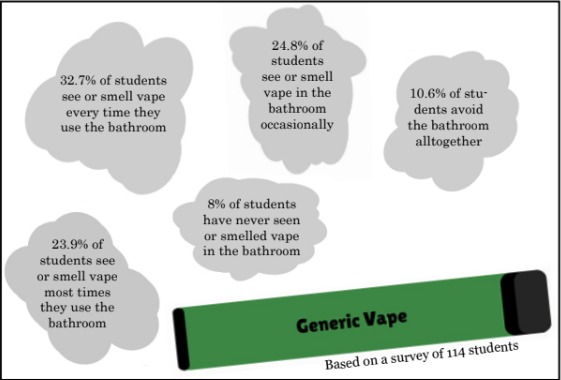It is indisputable that overconsumption of resources poses a problem. It is not too late and the future of the environment is not too far gone. To avoid the worst impacts of climate change, there must be a global achievement of net-zero carbon emissions no later than 2050, according to the Nature Conservancy.
A study by The Guardian shows that humans are consuming the planet’s resources 1.7 times faster than they can regenerate. James Griffone, environmental science teacher, defines overconsumption as an “excessive use of resources” that is often done out of habit.
“In developed countries, there is often not much regard for how much we do have, or demonstrating restraint with acquiring new goods. When we see something that we want, we often buy it without considering how long this product will last us, what went into making it, and where it will go when we are done with it,” Griffone said. “The best way of cutting back is minimizing usage in the first place (within reason) – not everything can be recycled, and even recycling requires energy.”
This approach reflects a broader issue with our consumption patterns.
“We’re attempting to fill unlimited wants and unlimited needs with limited resources,” Andrew Adamiak, senior, said.
“Overconsumption has become a ‘trend’. I’ve seen many videos of people stocking up entire fridges with rows and rows of food that won’t last, people with soap and body wash collections that realistically could not all be used in their lifetime, and people who collect Stanley cups,” Lauren Mika, senior, said. “But the big corporations are the main issue if we want to combat climate change.”
According to an analysis by research group InfluenceMap, only 57 companies are responsible for 80% of global carbon emissions. This is compared to the average person who produces about four tons of carbon dioxide each year. This is quadrupled in the US with the average person producing about 16 tons of carbon dioxide yearly.
A Newcastle study proves that the average human will ingest around a credit card’s worth of plastic every week. The main cause being single-use plastic water bottles.
Micro and nanoplastics aren’t the only environmental problems harming health. “our diet plays a massive role in the health of the environment. Animal agriculture products are extremely wasteful towards energy, water, and land resources. The most wasteful food source is beef. Much of this land utilized for animal agriculture can be directly converted into agricultural land for humans,” Griffone said.
Additionally. “animal agriculture products can pose a risk when not consumed in significant moderation. Many are high in saturated fats and cholesterol, which can (and does when we look at trends for the average American diet and health) increase an individual’s risk of heart disease, strokes, diabetes, cancer, and more.” The higher up on the food web an animal is, the greater their intake of pollutants from their own diet – causing many health problems.
A study from the University of Oxford shows that every 70 grams of red meat per day was associated with a 15% higher risk of ischaemic heart disease and a 30% higher risk of diabetes.
Addressing the root of the problem involves more than changing personal habits. To try and protect the environment as a whole, “vote and advocate for politicians who believe in climate change and want to do something about it. Most politicians have their pockets filled by big oil companies that have profited from the denial of climate change. Make yourself knowledgeable, and make yourself heard.It’s your duty,” Griffone said.







